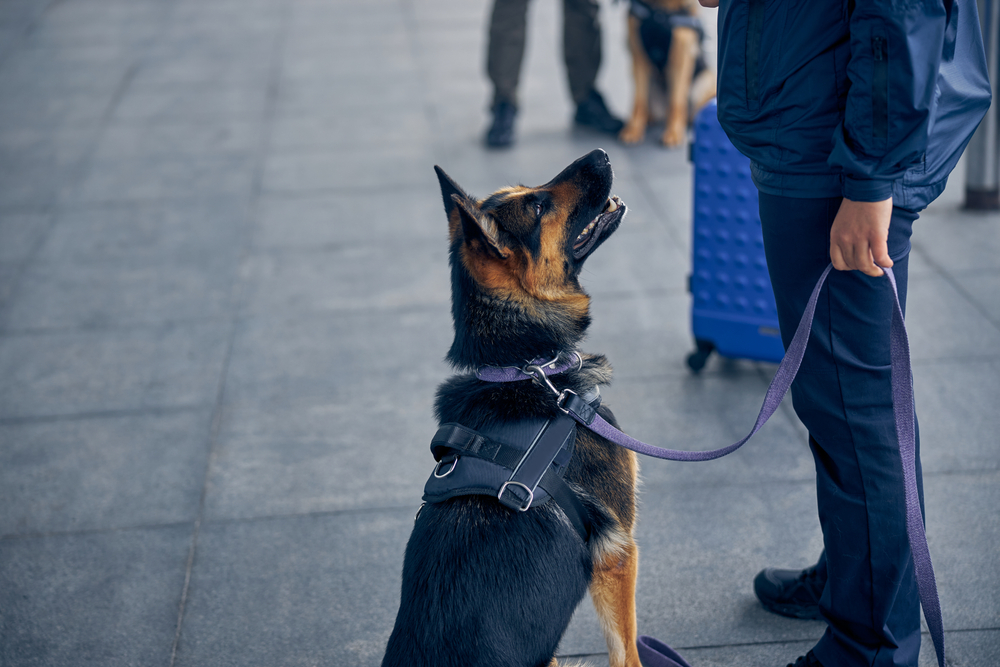Your cart is currently empty!
An Italian Man Took His Beloved and Terminally Ill Dog to See the Ocean One Last Time

They say dogs give us some of the best days of our lives and one of the worst: the day we have to say goodbye.
Anyone who’s loved a pet knows this truth intimately. They don’t speak our language, but they understand our moods. They don’t live long, but they love hard. Their loyalty doesn’t waver, even when their bodies do. So what does one do when that time comes, when goodbye feels both unbearable and inevitable?
Piero Temperato, a man from Italy, answered that question with a simple yet profound act. Faced with the impending loss of his elderly dog Greta, he didn’t retreat in sorrow he packed a blanket, carried her frail body to the beach, and let her gaze at the ocean one last time.
What followed was more than a touching moment it was a quietly powerful reflection of how we honor love, life, and loss. Greta’s final journey touched hearts around the world, not because it was dramatic, but because it was deeply human. And perhaps, in remembering how she was seen off, we can better understand how to cherish what we still have.
The Human-Animal Bond
For many, a pet is not just an animal they’re a confidant, a silent witness to life’s triumphs and trials, a steady presence through heartbreaks, relocations, and quiet Sunday afternoons. Scientific studies have long confirmed what pet owners intuitively know: the bond between humans and their animals runs deep, both emotionally and physiologically.
According to a 2021 study published in Frontiers in Veterinary Science, the relationship between dogs and their owners can mimic the attachment style typically seen between children and parents. Dogs look to their humans for safety, comfort, and emotional cues. In return, human brains release oxytocin the “love hormone” during interactions with pets, reinforcing feelings of affection and trust. This neurochemical feedback loop explains why the grief of losing a pet can mirror the intensity of losing a human loved one.
Piero Temperato and his dog Greta exemplified this connection. Rescued from a pound after nine years of confinement, Greta became more than just a pet she became a symbol of second chances, devotion, and resilience. Their relationship spanned years of companionship, culminating in a moment on the sand that spoke volumes without words.
This kind of loyalty isn’t rare, but it often goes unseen. When we hear stories like Greta’s, we’re reminded that grief over a pet isn’t exaggerated or misplaced it’s valid. These creatures know us in ways few others do. They recognize the sound of our footsteps, the tone of our voice, the rhythm of our routines. And when their time comes, what many of us want what they deserve is not just a quiet end, but a meaningful one.
By carrying Greta to the shore, Piero was giving her more than a view he was giving her the closure, presence, and peace we all hope for, whether we walk on two legs or four.
When Goodbye Becomes a Journey

In moments of impending loss, it’s often the small, intentional acts that carry the most weight. Just as we hold funerals, light candles, or visit gravesites for loved ones, many pet owners are beginning to embrace personal rituals to mark the passing of their animal companions. These gestures big or small are not simply sentimental; they are a form of emotional processing, a way to translate silent heartbreak into something tangible.
Piero Temperato’s journey to the sea with Greta was, at its heart, a farewell ritual. He didn’t wait for death to come in a sterile room. Instead, he made a deliberate choice to end things in a place of meaning, creating a final shared memory rooted in peace and love. That act transformed what could have been a clinical, quiet passing into a profound emotional moment for both dog and human.
Such rituals are becoming more common, and not just in isolated instances. Jason Dunne, another grieving dog owner, honored his Labrador Rex by leaving a box of tennis balls at their favorite beach after Rex passed away. Attached to it was a note inviting others to take a ball and play with their pets in Rex’s memory. The box, labeled “The Goodest of Good Boys,” quickly became a symbol of shared grief and joy in the community. Like Piero, Dunne turned his personal mourning into a collective act of love, one that invited others to reflect on their own bonds with their pets.
These rituals serve multiple functions: they celebrate life, offer closure, and provide a shared space for grief. According to Dr. Wallace Sife, founder of the Association for Pet Loss and Bereavement, “Meaningful rituals help us focus our sorrow, express our emotions, and find comfort.” Whether it’s a beach trip, a backyard burial, or a favorite toy placed under a tree, these acts offer grieving pet owners a path through loss—a way to acknowledge what that animal meant, and to gently let go.
In Greta’s case, her final hours were not marked by fear, but by familiarity: the sound of waves, the scent of the sea, the warmth of a blanket, and the voice of the person who loved her most. That kind of goodbye isn’t just a gift for the pet it’s a healing moment for the human, too.
The Power of Sharing Grief Online

In a digital age often criticized for its fleeting attention spans and shallow interactions, there are moments when the internet becomes something else entirely—a space for connection, vulnerability, and shared humanity. That’s what happened when Piero Temperato’s tribute to his dog Greta began to circulate online. Originally posted on Facebook and later reshared on Reddit with the caption “One Last Journey,” the story quickly resonated far beyond his own community.
The image of Greta wrapped in a green blanket, resting peacefully by the sea struck a universal chord. In just days, the post received thousands of reactions, not from people drawn to sensationalism, but from those who understood the quiet heartbreak of losing a pet. One user wrote, “To the sea, we all journey back to the sea. Long may you run, beautiful one.” Another reflected, “The things we do for our dogs. I’m sure many people would say you were cruel to do this, but they don’t know.” These comments didn’t just express sympathy they echoed lived experience.
What makes stories like Greta’s so impactful is their emotional honesty. They offer no false heroism, no grand narrative arc just a man, a dog, and a final gesture of love. And in doing so, they give others permission to feel deeply, to remember their own losses, and to speak about them openly.
Sharing grief online can often be met with hesitation. But as mental health professionals increasingly note, virtual communities can play a vital role in emotional healing. Dr. Joanne Cacciatore, a researcher on grief and trauma, explains that witnessing others share authentic experiences of mourning can validate our own pain and reduce the isolation that loss so often brings.
The response to Greta’s story was proof of that. In the comments, strangers not only paid tribute to a dog they had never met but also shared their own memories of dogs named Max, Luna, Bear, Daisy each a reminder that love, even when lost, leaves an indelible imprint. The grief was personal, but the resonance was collective.
In this digital memorial, Greta lived on not just as a beloved pet, but as a symbol of enduring connection and compassion. And in witnessing her final journey, thousands were reminded of the simple, transcendent power of love that needs no translation.
How to Grieve for a Beloved Dog

Grieving the death of a dog can feel as intense and sometimes more disorienting than mourning a human companion. Yet, in a culture that often minimizes pet loss, many find themselves grappling with powerful emotions in silence. The truth is, losing a dog is not “just losing a pet.” It’s losing a source of unconditional love, daily routine, emotional support, and in many cases, a best friend.
Experts in pet bereavement emphasize that grief after the loss of a dog is real, valid, and deeply personal. According to the American Veterinary Medical Association, it’s common for people to experience stages of grief similar to those after human loss: denial, anger, bargaining, depression, and acceptance though not always in that order or with any clear timeline. Here are a few meaningful ways to support yourself through that grief:
1. Create a Ritual or Memorial
Whether it’s a final walk, planting a tree, or creating a photo album, rituals can help process the end of a relationship that was built over years. Acts like Piero’s trip to the sea or Jason Dunne’s tennis ball tribute give shape to otherwise formless grief.
2. Talk About It With People Who Understand
Share your feelings with friends who are also animal lovers, or seek out grief support groups specifically for pet loss. Online communities, like those that rallied around Greta’s story, can offer solace, validation, and the gentle reminder that you’re not alone.

3. Allow Yourself to Feel Everything
Guilt, sadness, even relief especially if your dog had been suffering are all natural responses. There’s no “wrong” way to grieve, and forcing yourself to move on quickly can prolong the healing process.
4. Honor Their Legacy
Write about your dog, donate to an animal rescue in their name, or volunteer at a shelter. Acts of kindness in your pet’s memory can be healing and meaningful, helping channel grief into connection.
5. Be Patient With the Process
Grief doesn’t have a schedule. Some days may feel unbearable, others more manageable. Over time, the acute sting may soften, making room for warm, grateful memories of the bond you shared.
As Greta’s story shows, love for a dog doesn’t end when their life does. It lingers in quiet corners of memory, in familiar routines, in the way we speak their name even after they’re gone. Grieving isn’t about letting go of that love it’s about learning how to carry it differently.
Love Doesn’t End Here
Greta’s last journey wasn’t marked by grand gestures or dramatic farewells. It was defined by presence by a man choosing to meet loss not with avoidance, but with devotion. In carrying his ailing dog to the sea, Piero Temperato gave Greta more than a final view he gave her a final moment of belonging, of dignity, and of love. And in doing so, he reminded us of something quietly powerful: how we say goodbye matters.
For those who have loved and lost a pet, Greta’s story is a mirror reflecting the pain of parting, yes, but also the beauty of honoring that bond to the very end. It tells us that our grief is real, that our rituals matter, and that the love we give our animals doesn’t vanish it transforms. Into memory, into legacy, into the gentle nudge to hold our current companions a little closer.
If there’s one lesson to carry forward, it’s this: don’t wait for the final moments to celebrate what your dog means to you. Take the walk, throw the ball, sit quietly beside them. And when that goodbye does come whether it’s at the beach, the vet’s office, or your living room floor know that showing up with tenderness is enough.
Because in the end, just like Greta looking out to sea, every goodbye is also a reflection of how deeply we have loved.
